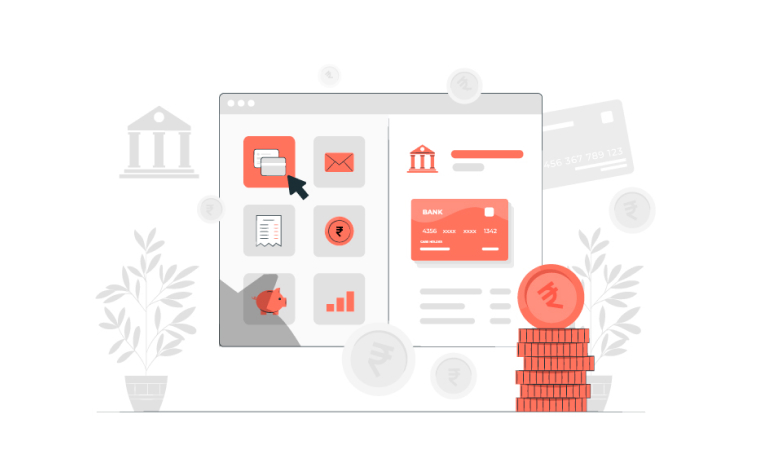Personal Loan Software: Key Features
Updated On : May 2024
In our fast-paced financial world today, both borrowers and lenders are looking for effective and convenient methods of managing the debt process, which has led to the development of personal loan software. It is easy to operate and also eradicates the tedious details of loan initiation, underwriting, and management owing to its advanced technology.
What is Personal Loan Software?
Put simply, personal loan software is an all-in-one platform that leads borrowers from the beginning to the end of their loan process. On one system, all details of loan application and repayment can be completed easily, saving borrowers time while freeing them from tiresome paperwork. Such a software package is a delight to use because it is equipped with powerful algorithms and flexible parameters that satisfy the needs of both parties concerned, sending these needs into fastidious management.
Key Features of Personal Loan Software
Personal software is fully-functional and is built to actually accommodate the needs of both borrowers and lenders. Here’s a look at a few of the key features and functionalities you can find in it:
- Application Management
The software´s convenient interface allows borrowers to quickly submit their loan application and check its status online. When necessary, lenders can manage these applications from the system itself, ensuring everything is organized and efficient.
- Automated Underwriting and Credit Scoring
Personal loan software is also capable of automating the underwriting process. This program hooks up with credit bureaus to retrieve and analyze borrower credit scores and offers advanced, scientific methods for credit risk evaluation. This means loan decisions are quickly made based on the available information.
- E-Signature and Document Management
Personal loan software takes the hassle out of managing documents by providing a secure and simple process for both the storage of documents and the use of e-signatures. Borrowers can upload and sign all necessary documents online, while lenders are always able to store or retrieve these files as needed. This saves on the expense of physical storage and improves compliance as well.
- Customized Loan Terms with Payment Processing Features
The software is capable of readily providing loan terms adapted to each borrower's unique circumstances. Payment processing capabilities also make the repayment burden much lighter since direct debits (or standing orders), detailed tracking of a loan's progress, and interest calculations are all included.
- Customer Relationship Management (CRM)
Many personal loan software programs come with CRM features built in. The lender can then have all his customer information in one place, which bolsters customer service and customer retention rates.
Loan Software Integration Process Steps
- Requirement Analysis and Planning: The first step is to gather and analyze requirements from all stakeholders, including lenders, borrowers, and regulatory bodies. Items in this phase include defining the scope and objectives of the software, identifying compliance and security considerations, as well as specifying software parameters.
- Selecting the Software Platform: Companies can opt to develop a custom package from scratch, tailor a product off- the-shelf to fit the need, or use a mixture of both approaches. Factors in the calculation are scale, cost, time to market, and special requirements.
- Design and Creation of Products: Once the necessary requirements are collated, designing the interface in both directions needs to be undertaken. Facilitating features such as application process management, automated underwriting tools for credit decisions at scale, KYC checks onsite in case of any obvious fraud attempt, or data security measures can be laid down.
- Integration and Checking: The software needs to be synched with a host of external sources, including credit bureaus, payment gateways, and regulatory databases as well. Besides, it must undergo rigorous testing to check whether various related requirements are met.
- Deployment and Coaching: Once the testing is over, the software can be deployed in actual environments and run. Also, staff members and customers need to be trained to ensure effective use of its tools.
- Maintenance and Upgrades: To ensure smooth working after deployment, the software must be monitored year-round, dispatched, and patches need to be fixed to provide enhancements.
Conclusion
Personal loan software is a big stride for the financial services industry as it uses technology to streamline all aspects, from deciding on whether to grant a loan to improving the services in many ways. It has the potential to popularize virtual lending as fast, safe, and convenient loan requirements become more pressing. Its introduction has brought about reform in banking practice on all levels.
Nelito Systems' FincraftTM Integrated Lending Management Solution (ILMS) provides an end-to-end solution for NBFCs and Microfinance specializing in personal loans, covering loan origination, management, and collection.
For more information, contact marketing@nelito.com or visit our website.
Leave Comments :
Latest Blog
-
 Driving Rural Financial Inclusion with Lending Management Software Updated
On : June 2025
Driving Rural Financial Inclusion with Lending Management Software Updated
On : June 2025
-
 The Rise of AI in Credit Risk and Lending Software Updated
On : July 2025
The Rise of AI in Credit Risk and Lending Software Updated
On : July 2025
-
 Green Lending: ESG Metrics Embedded in Lending Software Updated
On : July 2025
Green Lending: ESG Metrics Embedded in Lending Software Updated
On : July 2025
-
 The Role of Blockchain in Modern Lending Management Software Updated
On : July 2025
The Role of Blockchain in Modern Lending Management Software Updated
On : July 2025
-
 Ensuring Compliance in Loan Origination Software Updated
On : June 2025
Ensuring Compliance in Loan Origination Software Updated
On : June 2025



Comments :
What'sapp : +2348159250336
Email Address : carolblankatmcard@gmail.com
My husband left me for another woman 1 year ago and ever since then my life has been filled with pain, sorrow and heart break because he was my first love whom I have spent my entire life with. A friend of mine told me he saw some testimonies of a spell caster called Dr Gerald that he can bring back lover within few hours, i laugh it out and said am not interested but because of the love my friend had for me, she consulted the great spell caster on my behalf and to my greatest surprise after 11 hours my husband called me for the very first time after 1 year that he is missing me and that he is so sorry for everything he made me went through. He is back to me and now we are happy together. I still can't believe it, because it is highly unbelievable. Thank you Dr Gerald for bringing back my husband and also to my lovely friend who interceded on my behalf, for anyone who might need the help of this great spell caster here is the email address
psychicspiritualrealm@gmail.com
WhatsApp: +14242983869
Facebook Page: https://facebook.com/Psychicspiritualrealm
My husband left me for another woman 1 year ago and ever since then my life has been filled with pain, sorrow and heart break because he was my first love whom I have spent my entire life with. A friend of mine told me he saw some testimonies of a spell caster called Dr Gerald that he can bring back lover within few hours, i laugh it out and said am not interested but because of the love my friend had for me, she consulted the great spell caster on my behalf and to my greatest surprise after 11 hours my husband called me for the very first time after 1 year that he is missing me and that he is so sorry for everything he made me went through. He is back to me and now we are happy together. I still can't believe it, because it is highly unbelievable. Thank you Dr Gerald for bringing back my husband and also to my lovely friend who interceded on my behalf, for anyone who might need the help of this great spell caster here is the email address
psychicspiritualrealm@gmail.com
WhatsApp: +14242983869
Facebook Page: https://facebook.com/Psychicspiritualrealm